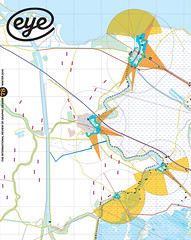Winter 2010
Tall and tan and young and cryptic
Bossa Nova and the Rise of Brazilian Music in the 1960s
Edited by Gilles Peterson and Stuart Baker; designed by Adrian Self and Baden Baden. Soul Jazz Records, £17.50The cover of Chico Buarque de Hollanda, one of 139 such LP covers collected in Bossa Nova and the Rise of Brazilian Music in the 1960s, features two symmetrical portraits of the youthful heart-throb. On the left, Buarque is smiling in all his iconic brilliance. On the right, his mirror image is expressionless, staring at the viewer with icy, unforgiving eyes.
Released two years after Brazil’s repressive military coup of 1964, the album is, in hindsight, a perfect expression of the Brazilian musician’s ability to embed criticism of the dictatorship within pop songs. Like many others, Buarque would flee Brazil to avoid torture, though not before serving time in prison. Few of the covers in this book are so literally two-faced (many are in fact purely joyful affairs) but they are often clever, and always enmeshed in such a deep cultural context as to beg decryption.
That is, in fact, the joy and peril of this book: the idea of Bossa Nova as ‘the culmination of a search for a national cultural modernism’ – and the turmoil of a totalitarian state grappling with ideas of exoticism and authenticity – is so thoroughly examined in the text that I found myself looking for signs where there were none.
Just look at the bibliography: The Politics of Military Rule in Brazil; Culture Wars in Brazil; Politics in Brazil 1930-64: An Experiment in Democracy; Ethnicity, Identity and Music; Brutality Garden. This is not elevator music.
It doesn’t help that the lone text on design – a page-long interview with prolific designer Cesar G. Villela – reveals that the recurring red dot motif in many of his most famous covers is a reference to the Kabbalah, of all things. Codes aside, there is much to adore in Villela’s stark red and black designs, often produced in tandem with photographer Francisco ‘Chico’ Pereira, which evoke a Blue Note-esque aesthetic (see ‘Cool, clear, collected’ in Eye 01). Villela and Pereira made the cover of Joéo Gilberto’s album Chega de Saudade (1958) described in the introductory essay as ‘ground zero for modern Brazilian music’.
Villela credits the inspiration he found in ‘amateurs abusing techniques’, and some of the most charming designs employ less refined techniques: some crushed Futura Black constructions; a variety of brutal photographic manipulations; and even a few collaged covers that anticipate the anthropophagic chaos of Rogërio Duarte and the Tropicalistas.
And there are plenty of beautiful people in this book. After all, amid the political strife Bossa Nova was the sound of Brazilian modernity – tall and tan and young and lovely.
First published in Eye no. 78 vol. 20 2010
Eye is the world’s most beautiful and collectable graphic design journal, published quarterly for professional designers, students and anyone interested in critical, informed writing about graphic design and visual culture. It is available from all good design bookshops and online at the Eye shop, where you can buy subscriptions and single issues.

